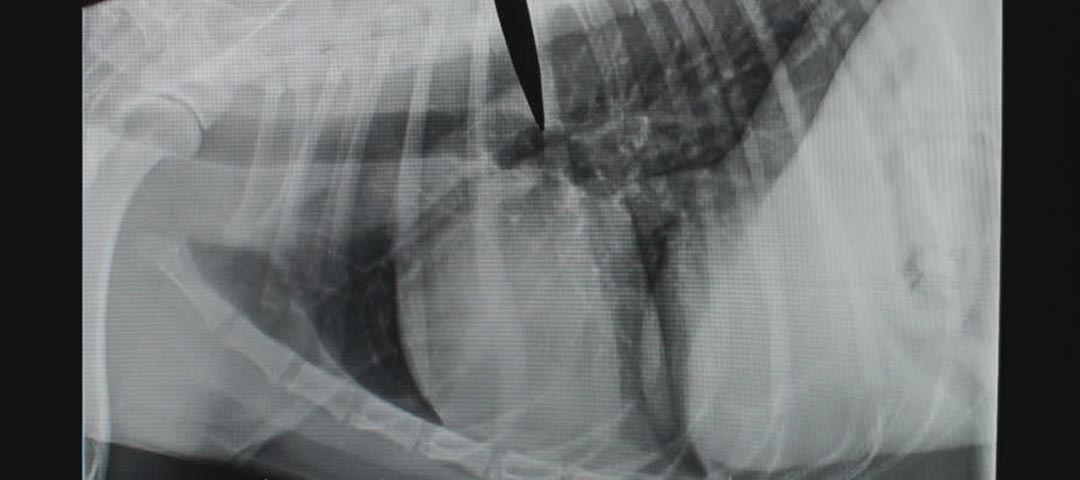
Screening Your Dog for Lymphoma
An owner’s guide to the results
What is screening?
Screening is looking for cancer before your dog has any symptoms. This can help find cancer at an early stage. When abnormal tissue or cancer is found early, it may be easier to treat. By the time symptoms appear, cancer may have begun to spread. Lymphoma is the most common type of cancer in dogs. Lymphoma can develop without any signs of your dog being unwell until the disease is in its late stages.
It is important to remember that your vet does not necessarily think you have cancer if he or she suggests a screening test. Screening tests are given when your pet may have no cancer symptoms. They are useful when your dog is from one of the recognized high risk breeds, has a family history of lymphoma or has reached middle age, when the risk of lymphoma unfortunately increases. Since lymphoma can now respond well to treatment, catching it early is one of the best things that you can to do help your dog, particularly if they are in one of these high risk categories. Screening tests may be repeated on a regular basis.
How does the screening test work?
Your vet will already have taken a very small blood sample from your dog and sent it to PetScreen for testing. We have tested the blood to look for markers of lymphoma. These are proteins which are produced by the lymphoma cells and can be found in the blood. If we do not find any lymphoma markers in the blood, the test will be reported as negative. If lymphoma markers are found, then the test will be reported as positive.
What does a negative result mean?
A negative result shows that there are no lymphoma markers in your dogs blood at the time of testing (although in about 15% of cases, it is possible that the biomarkers can be missing). Although lymphoma can affect any dog at any age, statistics show that the disease is most common in certain breeds, in dogs with a family history and also in dogs from middle age onwards. Just like with ourselves, vigilance is the key to helping fight this disease. The timing of your dog’s next screening test will depend on the breed, age and family history. We recommend that a healthy dog is tested annually. For dogs from high risk breeds, a family history of lymphoma or from middle age onwards, testing every six months should be considered.
What does a positive result mean?
A positive result means that we have found markers for lymphoma in your dog’s blood. Although this news may be very worrying, it is important to remain calm and be guided by your vet through the next steps. Because you have had your dog tested for lymphoma, your vet will be in a much better position to provide the best possible care. Lymphoma treatment has advanced dramatically over recent years, and is the type of cancer in dogs which responds best to treatment – particularly when caught early. Also remember that no test is 100% perfect, in a small number of cases no disease will be present. The additional tests that your vet will do will confirm the diagnosis and, if necessary, will help them plan the next steps. Depending on a number of factors, your vet will recommend a range of different actions.
If your dog is well, is from a low risk breed with no family history and has no obvious lumps or bumps, your vet may well recommend that you keep a close eye on them and come back for another check up in about six months time. This is often called Active Monitoring. Your vet can teach you to look out for lumps and bumps – particular places to keep a close eye on are around the neck and under their “armpits”.
If your dog is well but is from a recognised high risk breed or has a family history of lymphoma, your vet may want to run some additional tests such as an x ray or a scan. If your dog is showing some swollen glands, your vet might want to take a small sample of the cells in the gland (called a biopsy) which is then sent off to a specialist laboratory for further tests.
If your dog is unwell, your vet will certainly want to perform a series of extra tests which will include scans and biopsies of your dog’s lymph nodes in order to obtain a definitive diagnosis of lymphoma.
What happens if lymphoma is then diagnosed?
Your vet will want to start a treatment programme which may include some surgery, but nearly always includes drug treatment too. Your vet will discuss all the various options that are best suited to your dog. When the lymph node is being biopsied, your vet might consider using a test called DCA which helps them to find the most effective drug to treat your dog.
How can I help to monitor for signs of cancer in my dog?
Just like with ourselves, good vigilance can really help in the fight against cancer.
There are 10 classic signs to look out for:
- Abnormal swellings or lumps that persist or continue to grow
- Sores that do not heal
- Loss of appetite
- Weight loss
- Bleeding or discharge from any body opening
- Difficulty eating or swallowing
- Offensive odour
- Hesitation to exercise or loss of stamina
- Persistent lameness or stiffness
- Difficulty breathing, urinating, or defecating
If you spot any of these signs in your dog, you should report them to your vet as soon as possible. These symptoms often develop slowly, so it is best to get to know your dog’s habits well. It is also important to bear in mind that these symptoms can also be brought on by other diseases, so don’t immediately expect the worst.
Which breeds of dog are most prone to lymphoma?
Lymphoma accounts for approximately 20% of all cancer in dogs. It can affect any breed at any age. Males and females are at equal risk. Particularly high incidence is found in:
Particularly High Risk Breeds High Risk Breeds
- Golden Retrievers Cocker Spaniels
- Boxers Rottweilers
- German Shepherds Doberman Pinschers
- Scottish Terriers Schnauzers
- West Highland Terriers Flat Coat Retrievers
- Pointers Bernese Mountain Dogs
- Great Danes
- Greyhounds
- Standard Poodles
The recommendations made in this article do not replace the advice of your veterinary professional. Always exercise your own judgement about whether something is right for your dog and consult your vet if you are unsure. Englishtoyterrier.co.uk accepts no liability for any situation that may occur as a result of following these recommendations.
